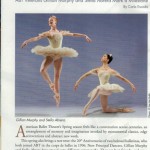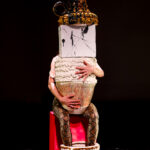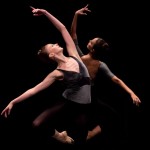Leigh Donlan reviewed the 29th June, 2024, evening performance at the Metropolitan Opera House in New York
The shiny new thing at American Ballet Theatre’s unusually compact summer season at the Met, Wayne McGregor’s Woolf Works, just concluded its New York premiere run – and it’s spectacular. While there are elements of three of Virginia Woolf’s novels – Mrs Dalloway, Orlando and The Waves – in each of the three acts, McGregor seems less concerned with storytelling than themes and motifs: diving and resurfacing, madness, space and time, and consciousness.
This ambitious work, originally created for the Royal Ballet in 2015, with the legendary Alessandra Ferri in the lead role, channels the spirit of Virginia Woolf’s surrealist, stream-of-consciousness writing through McGregor’s wildly intelligent choreography and brilliant sets, particularly Lucy Carter’s light designs in “Becomings,” the second act that riffs on Orlando’s themes of altering realities and ever-expanding consciousness.
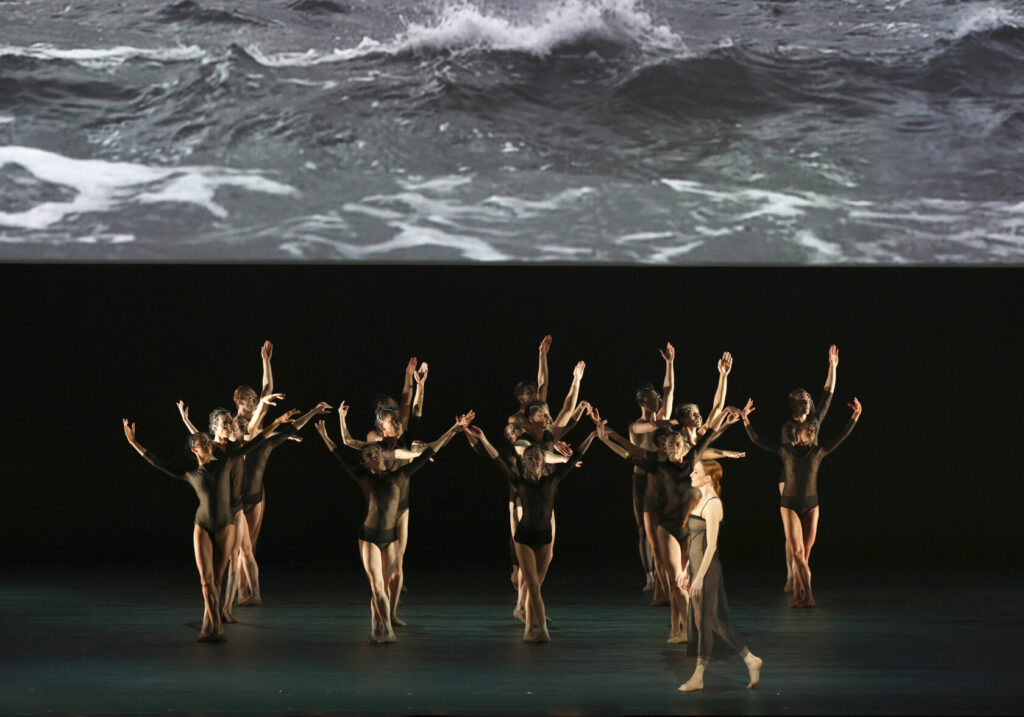
Act 1’s take on Mrs. Dalloway, titled “I now, I then,” featured a monumental set design of three massive wooden rectangular frames that slowly rotated at center stage, through which moved characters, who appeared to be reminiscing while fractured memories presented downstage. When the curtain rose, we heard Woolf’s voice reading a fragment of her essay “On Craftsmanship.” While Ferri reprised her role on two nights, to great acclaim, it was the stellar Gillian Murphy whom I saw in the role of Woolf/ mature Clarissa. Gorgeous and sorrowful in her seafoam green gown, her alabaster skin and red hair aglow, she embodied Woolf’s pensive nature with intent, scrupulous movement. Carlos Gonzalez as Septimus, the traumatized war veteran headed for a psychiatric assessment, gave a deeply moving performance as a character going through great mental anguish, a harbinger of Woolf’s own mental health crises in Act 3. We perceived the mix of characters as interchangeable: younger and older selves, lovers, friends, converging and scattering under the ominous Max Richter score masterfully conducted by Charles Barker, and accented by the intermittent tolling of Big Ben.
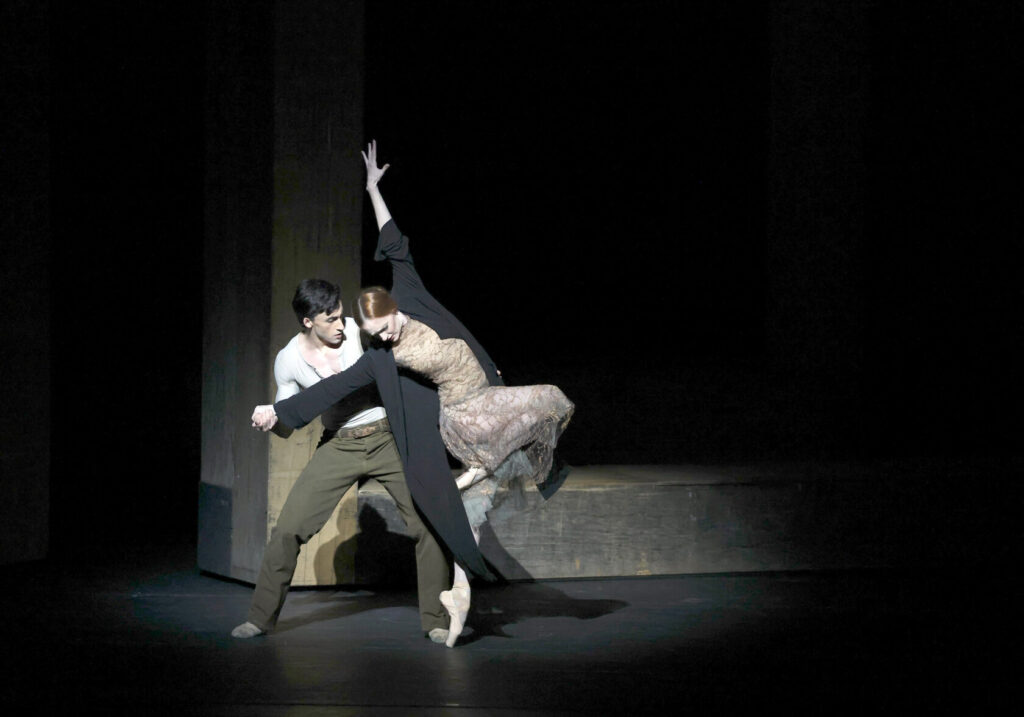
“Becomings,” Act 2’s take on Orlando, was electrifying, start to finish, with dazzling costumes (Moritz Junge) in a punk rock-Elizabethan aesthetic that reconciled sharp regal ruffs, metallic golden gowns and knickers, armor-like tops, and barely-there bodysuits. A laser light show in a ballet risks turning the show into a circus, but Carter’s pristine virtual designs proved poignant – an enormous white columned labyrinth, rainbow-hued scrims, and a final projection over the audience that captured what seemed to be the ocean within elongated, triangular prisms. The dancers propelled through time, space and gender, movements depicting the transient nature of relationships. At times, laser light seemed to shoot from the dancers’ bodies. The lighting, which both illuminated and obscured, quick costume changes and heavy, reflective stage make-up made it difficult to identify dancers, difficult even to follow the journey of the central Orlando character (the forthright and meticulous Catherine Hurlin on Saturday night) unless you were seated close to the stage. Dancers appeared seemingly out of nowhere and moved in all directions, shaped in a multiplicity of forms, demonstrating their full range of technical prowess – notably the lithe SunMi Park who darted about like a wandering compass, pointing here and there, and quick to change directions. McGregor’s vocabulary of extremely athletic lifts, seamless full body collapses to the floor from relevé, sharply tossed hips forming accents like exclamation points or question marks, and reverse breaststrokes equipped the dancers for a wild ride over challenging terrain … one particularly impressive lift involved a male dancer aiming a female’s full body like a gun.
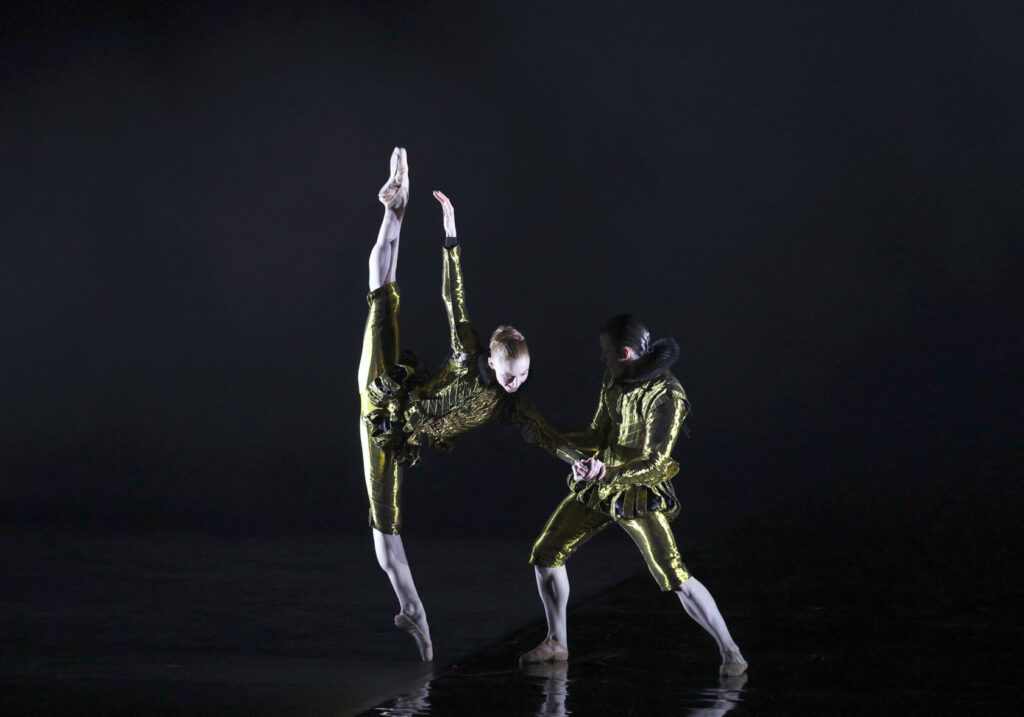
Act 3’s “Tuesday,” inspired by The Waves, was a slow and gentle heartbreak. McGregor respectfully honored Woolf’s dignity in his portrayal of her death. A projection of a mounting storm at sea stretched across the backdrop as we listened to a reading of Woolf’s lucid, heartrending suicide note – written on a Tuesday (voiceover by Gillian Anderson.) Movement was continuously fluid, a stark contrast to the kinetic transiency of Act 2. Dancers created ripples, whirlpools and the waves that ultimately submerged Woolf. We watched her sister Vanessa (the luminous Christene Shevchenko) and her six children (students at ABT’s Jacqueline Kennedy Onassis School) diving in waves, playing games with a heavy rope that bound them together, a loose representation of the six characters from the novel. Vanessa’s arms motioned a prayerful lullaby and she tenderly held her sister’s waning body. Murphy seemed to glow brighter as the departing Woolf, sinking to her final depth, delivering a powerful dramatic performance – with Joo Won Ahn an endearing, steadfast presence in the role of Woolf’s husband Leonard.
Woolf Works isn’t constantly gripping: some stream-of-consciousness sections in Acts 1 and 2 felt too long-winded, and the Max Richter score resounded heavily like an overly dramatic movie soundtrack. But overall, this work is as intriguing as a Woolf novel, something to be returned to again and again, new discoveries to be made with each read or viewing. Safe to say many are eagerly awaiting its return.


